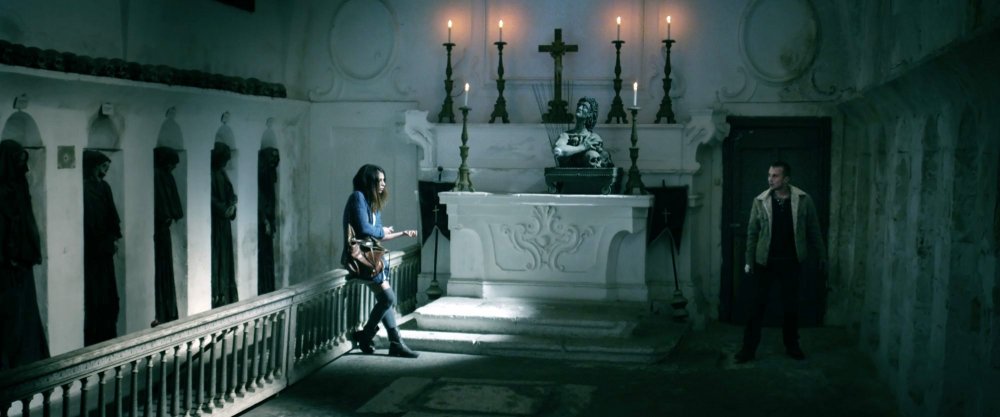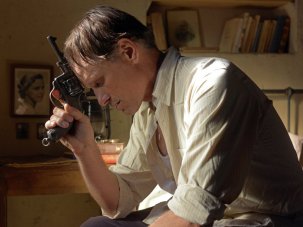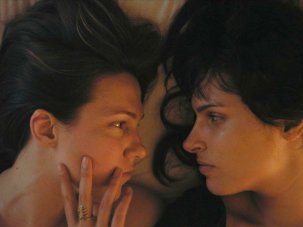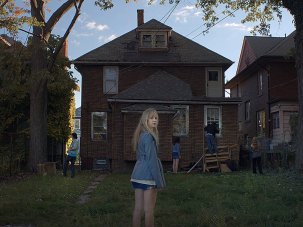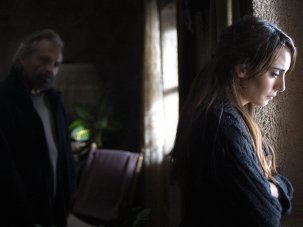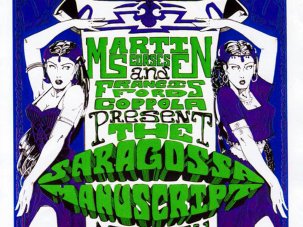‘Cult’ is a difficult label. Originally it was used to describe films less by their content than by the kind of fanatical, somewhat suspect audience that devotes itself to their repeat viewings – so strictly speaking a film became ‘cult’ only after it had acquired a base of wide-eyed followers. By this definition, of all the films in the Cult strand of this year’s BFI London Film Festival only Tobe Hooper’s classic The Texas Chain Saw Massacre (1974) could truly be said to have been around long enough to earn cult credentials. Whether it actually is a cult film – as opposed to just an all-out classic – is up for debate, but few who saw it in its stunning 4K restoration (with ferocious new 7.1 surround-sound mix) will be likely to complain.
8-19 October 2014 | UK
Over time, cult, like ‘indie’, has to a degree shaken off its etymological origins to become a loose genre term for a kind of movie that is easier to recognise than to define. Wayward and weird, outrageous and outré, cult films tend to occupy the midnight niches of genre: blurring boundaries, defying decorum and generally blowing the viewer’s mind.
Within the LFF, the Cult strand’s demarcation is somewhat compromised. Some obvious contenders – the entomo-erotica of Peter Strickland’s The Duke of Burgundy, the Persian-hipster vampirism of Ana Lily Amirpour’s A Girl Walks Home Alone at Night, the morally murky medieval sci-fi of Alexei German’s Hard To Be a God, the bovine perspectives of Josephine Decker’s indefinable Thou Wast Mild and Lovely and the rambunctious, hyper-aggressive misanthropy of Nakashima Tetsuya’s The World of Kanako – have been ‘lost’ to other, overlapping festival strands.
On the other hand, with its unofficial status as the LFF’s home for high-end horror (cultish or otherwise), the Cult strand must compete for both attention and titles with August’s ever-expanding, omnivorous FrightFest. Still, there were some clear standouts in this year’s programme, from Justin Benson and Aaron Moorhead’s Spring and Aik Karapetian’s class-y Latvian slasher-in-the-head The Man in the Orange Jacket (more on both of these below) to David Robert Mitchell’s timeless riff on sex and death It Follows, a hit from this year’s Cannes.
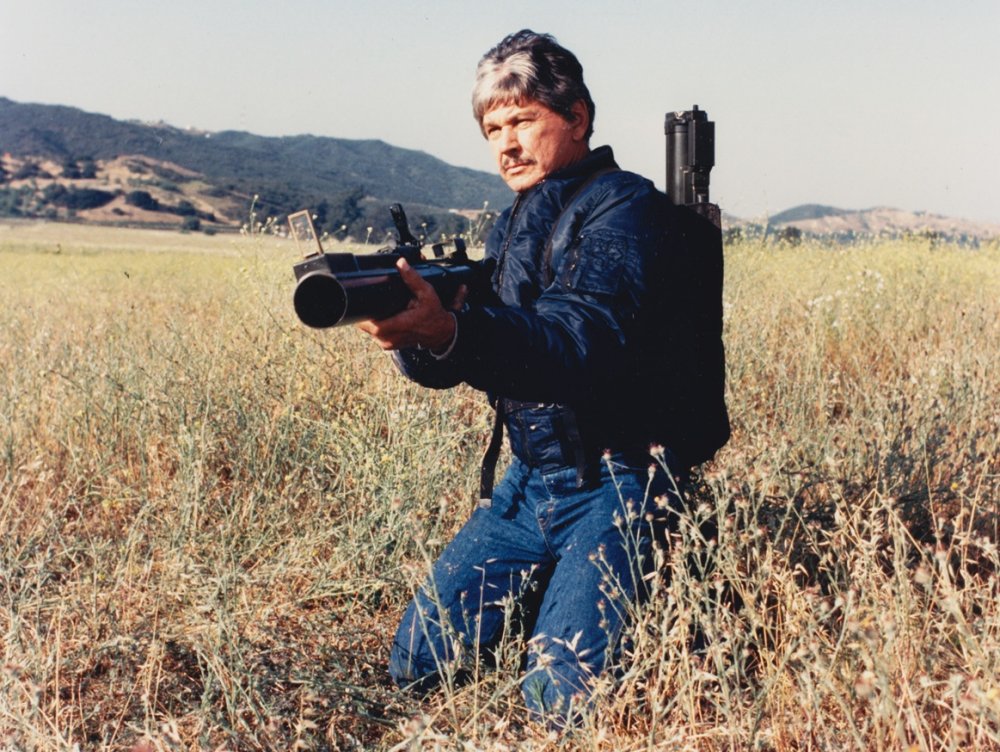
Electric Boogaloo: The Wild, Untold Story of Cannon Films (2014)
Mark Hartley’s typically energetic latest anecdotal doc Electric Boogaloo: The Wild, Untold Story of Cannon Films provides a convenient menu of cult’s characteristic attributes. Not that Menahem Golan and his cousin Yoram Globus, the upstart Israeli producers who ruled over the Cannon canon in the 80s, were ever in the business of making cult films – but as they reinvented the Hollywood rules to find alternative, independent routes to American and international audiences, there was something in their dogged pursuit of the bottom line and the lowest common denominator, combined with genuine cinephilia, lofty artistic ambitions and a staggering lack of good taste, that would occasionally engender deliriously singular genre mashups (Sahara, Ninja III: The Domination, Lifeforce) alongside the odd, even more unexpected masterpiece (Franco Zeffirelli’s Otello). Individually, few of their films amount to much, and Hartley struggles to find contributors to defend their oeuvre without qualification, but taken together (as they here are) these titles provide a heady mix of high and low – or as Cannon’s music supervisor Richard Kraft puts it, “the intersection of ideas that should never meet each other.” Somewhere at that unsafe intersection, cult also resides.

Tokyo Tribe (Tokyo Toraibu, 2014)
Take Sono Sion’s Tokyo Tribe, a stylised one-night-only rap opera which mixes the gangland tribalism of The Warriors (1979), or Japan’s Stray Cat Rock series, with rhymed dialogue and cartoonish ultraviolence (the film is based on a manga). Unfortunately, after an astonishing crane-and-track shot that forms the opening sequence, the film fast becomes a repetitive mess of superficial ideas and mismatched tones.
With no sense of economy, Tokyo Tribe introduces – then reintroduces and reintroduces once more – the city’s different gangs, distinguished more by their superficial styles (of rapping, costume and bling) than by any plausible characterisation. Here the men’s battles are reduced to literal cock fighting, while the women – even the kickass heroine, always caught in upskirt panty shots – are endlessly objectified.
All this walks a very fine line between parodying and merely perpetuating the very worst misogynies associated with hip hop. The rapping itself is not particularly distinguished, and might have seemed a more audacious, on-the-pulse medium of expression several decades earlier. In short, this meandering, mediocre film never quite knows what to do with its big, bonkers concept. Tokyo Tribe bears all the hallmarks of a cult film, but by Sono’s own very high standards (Love Exposure, Why Don’t You Play In Hell?, etc), it counts as a real disappointment.
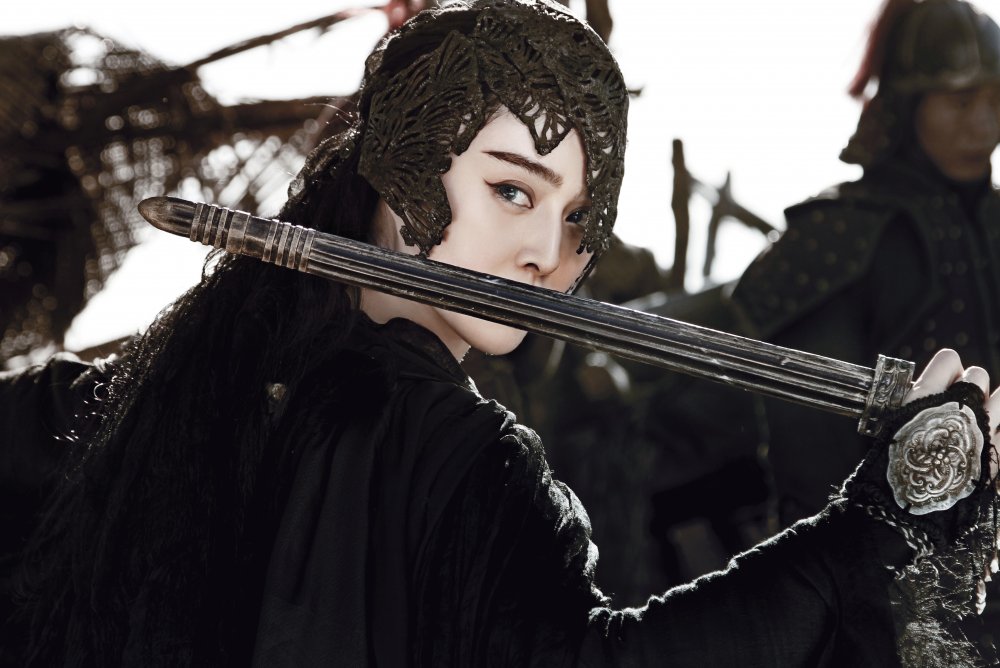
The White Haired Witch of Lunar Kingdom (2014)
Similarly unimpressive was Jacob Jacob Cheung’s The White Haired Witch of Lunar Kingdom, a wire-and-CGI wuxia fantasy that stretches the viewer’s powers of focus by first flashing a slew of 2D expositional captions over its busy 3D plane, then repeatedly recapitulating not the (crucial) details of its Ming Dynasty setting but rather moments of throwaway romance between hero Zhuo Yihang (Huang Xiaoming) and the ‘witch’ of the title (Fan Bingbing). How was this kitsch-fu confection, with its overblown sentimentalism matched only by its tacky day-glo backgrounds, ever selected for Gala presentation? The action choreography, however, is imaginative and excellent.
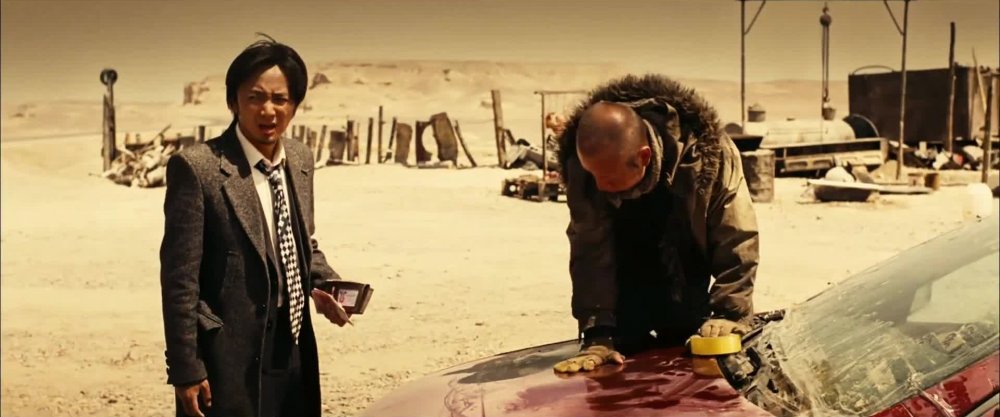
No Man’s Land (Wu ren qu, 2014)
Ning Hao’s No Man’s Land (Wu ren qu), the third and easily the best Far Eastern film in the Cult programme, was also a western of sorts, as well as a Coens-esque caper of collisions deliberate and accidental. Hoping to enhance his prestige and profit at home, ambitious, amoral city lawyer Pan Xiao (Xu Zheng) defends an indefensible falcon smuggler/cop killer (Duo Bujie) in remote northwestern China – but then, returning by car along the only road through the Gobi desert, Pan has a series of picaresque, increasingly perilous encounters that will lead him to reexamine his own humanity in a dog-eat-dog world.
Combining an oater’s widescreen gun- and horse-play and desert stand-offs with the truck-as-weapon mechanics of Duel or the Mad Max films, No Man’s Land is a thrilling, often darkly funny genre piece – but it also comes with allegorical undercurrents, as the most extortionate, exploitative aspects of unchecked capitalism come to define the wild borderlands of this “story about animals”, which also serves as a cautionary fable for China.
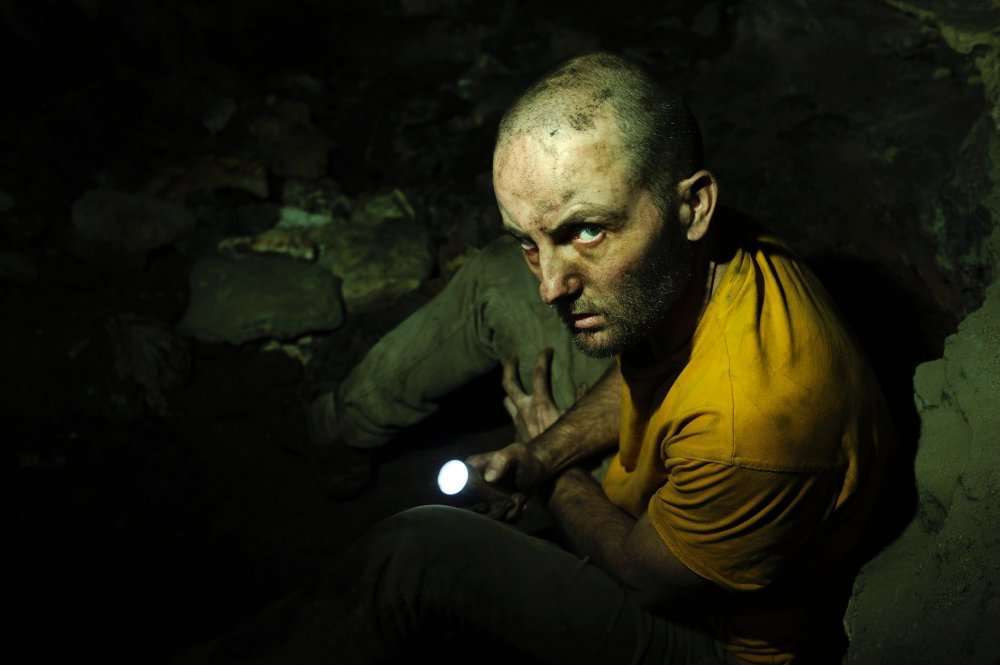
In Darkness (2014)
More literally underground cinema than cult, Alfredo Montero’s In Darkness We Fall (La Cueva) features an early scene in which one of its five irksome young holiday-making hedonists has a camera pointed close up to his bared rectum for posterity. It’s a key image – for not only is this an arsehole filmed by an arsehole, but in the film’s second half the quintet will explore (and shoot) a much deeper, darker hole in which they’ll lose their spatial, then moral bearings.
This subterranean setting inevitably evokes Neil Marshall’s The Descent (2005) – yet in dropping altogether that film’s apparatus of troglodytic creatures in favour of empty characterisation, Montero also abandons any means of establishing a sublimated, atavistic psychology. What remains is endless circular crawling from characters whose shallowness suggests they have, for all their disoriented submergence, never quite left the surface. The Darwinian struggle that ensues never offers enough meat on the bone to sustain the viewer even for the film’s relatively short duration (which really does feel like four days).
This is found footage disappearing up its own fundament, although the bitter end does put a mild spin on the format, suggesting video files not found but left hidden. Some evidence is better left buried – although In Darkness We Fall will certainly terrify anyone with even mild claustrophobia.
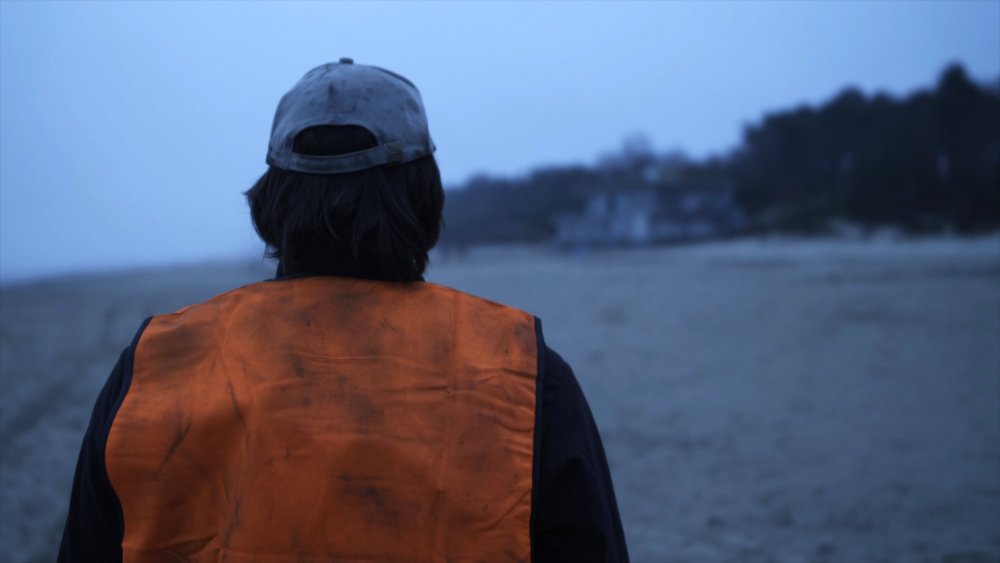
The Man in the Orange Jacket (2014)
Much more inventive was Aik Karapetian’s debut The Man in the Orange Jacket (M.O.Zh). If its prologue suggests a standard home-invasion slasher with a prole-revenge angle – as the dockworker of the title (Maxim Lazarev) breaks into the mansion of the industrialist (Aris Rozentals) who just laid him off and silently, brutally attacks the old man and his younger wife (Anta Aizupe) – then the following four-part narrative unfolds something altogether more complicated. For as our tool-wielding antihero makes himself at home in the winter-bound residence, dressing in his oppressor/victims’ clothes – eating their food and experiencing how the other half lives – he becomes aware of another presence in the house and finds himself engaged in class war with himself, playing cat and mouse with his own darkest dreads and desires.
The result is a Latvian minimalist Oedipal mystery, full of angst-riddled dreams, irrational symmetries and tail-chasing creepiness – with the finest sound design to be found in the entire festival.

Kristy (2014)
That was not in fact the only slasher of the strand. Located on a university campus otherwise abandoned for Thanksgiving, Oliver Blackburn’s Kristy pits young stay-behind student Justine (Haley Bennett) against a quartet of disaffected local hoodies hellbent on filming a random innocent’s murder for an internet cult. This follow-up to Blackburn’s Donkey Punch is beautifully shot, and sets its mostly familiar stalk-and-dash material within the context of contemporary online anomie and a broader debate about chance versus causality.
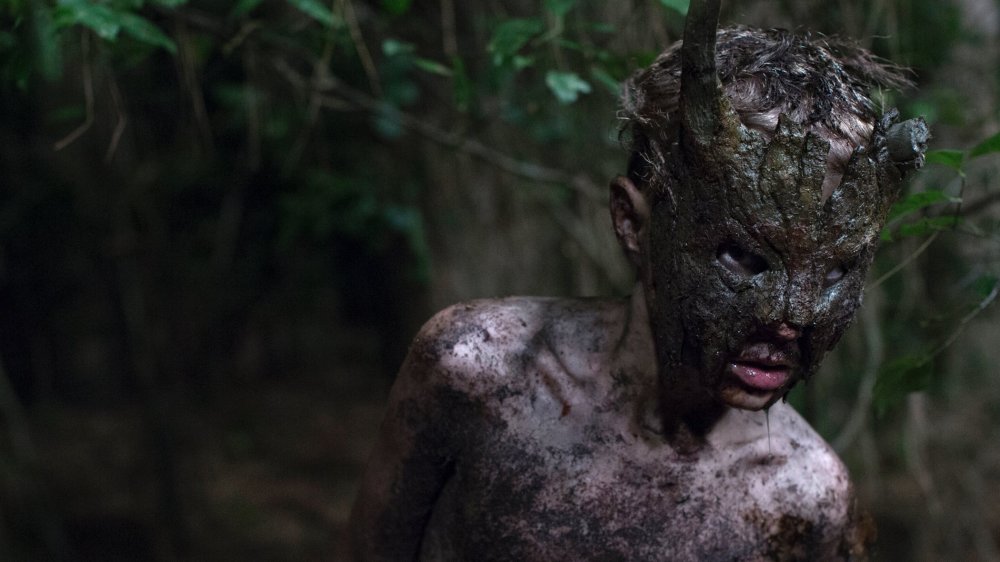
Cub (2014)
Jonas Govaerts’ Cub (Welp) meanwhile sends troubled 12-year-old Sam (Maurice Luyten) on a Cub Scout camping trip to woodlands reputedly haunted by a werewolf. What the resourceful boy – and his troop – eventually find there is something different, if just as deadly; but by then Sam has already started learning hard lessons, whether genetic or environmental, in who he wants to be. The ensuing forest-bound fight-and-flight is hardly original – but seeing these formative games play out among such young characters makes for some uncompromising and confronting viewing indeed.
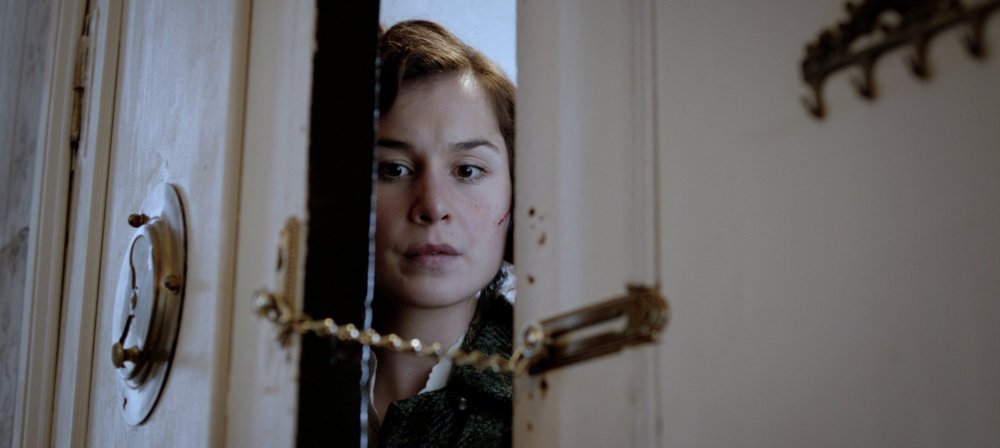
Shrew’s Nest (Musarañas, 2014)
If both Kristy and Cub concern young people finding themselves, then coming of age was also the unifying theme for the strand’s other titles. Juanfer Andrés and Esteban Roel’s Shrew’s Nest (Musarañas) opens in post-Civil War Spain with the 18th birthday of orphaned Elisa (Nadia de Santiago), who is still treated, sometimes violently, as a child by her barmy agoraphobic older sister Montse (Macarena Gómez). When dashing upstairs neighbour Carlos (Hugo Silva) turns up injured and unconscious on the landing, besotted Montse decides to make his life a misery, and Elisa must stop denying her twisted family legacy. Elegant yet utterly over the top, this shrill film requires a high tolerance for melodrama – yet while it barely hides its easily guessable narrative secrets, it does conceal allegory of an adolescent Spain struggling to break free from the sins of the father.
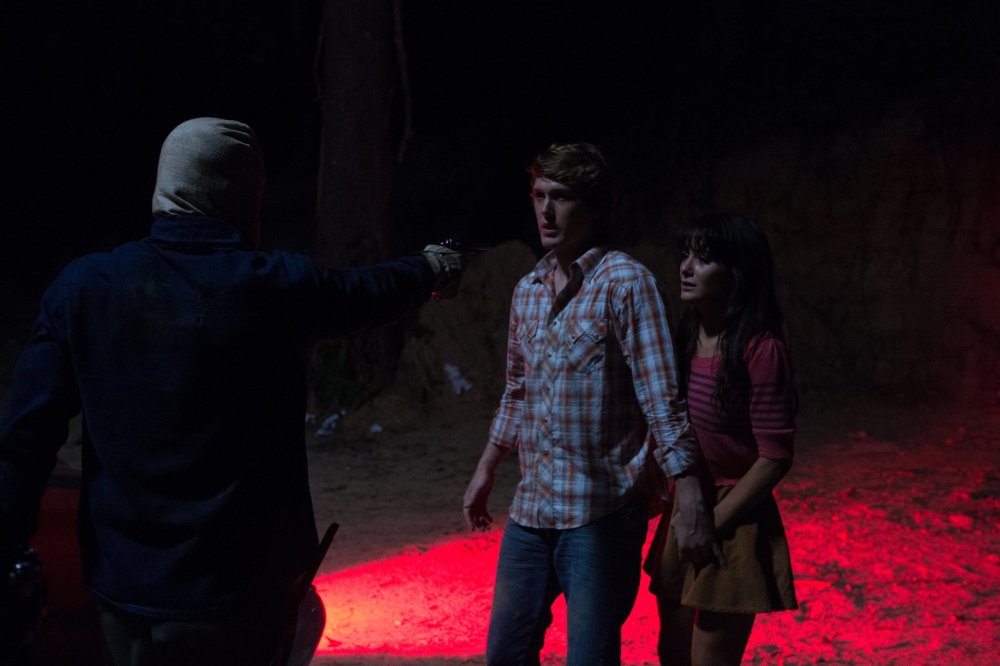
The Town That Dreaded Sundown (2014)
Alfonso Gómez-Rejón’s The Town That Dreaded Sundown is similarly haunted by an unresolved past which its protagonist, high-school senior Jami (Addison Timlin), must confront before she can move on to college and adulthood. The events that resurface here are the real-life 1946 ‘Moonlight Murders’ that left five dead in Texarkana at the hands of a never-identified ‘Phantom Killer’, and which inspired Charles B. Pierce’s (also real) local indie exploitation drama The Town That Dreaded Sundown (1977) – and now copycat murders.
Like Scream (and even more Scream 2), Gomez-Rejon’s movie is a self-conscious reimagining; unlike Craven’s films it revisits not just a former slasher movie but also a genuine cause célèbre, and shows the way that stories about the latter ramify to create their own casualties. Unusually for a postmodern meta-movie, it’s also broadly serious in tone – and much better than the amateurish 1976 ‘original’.
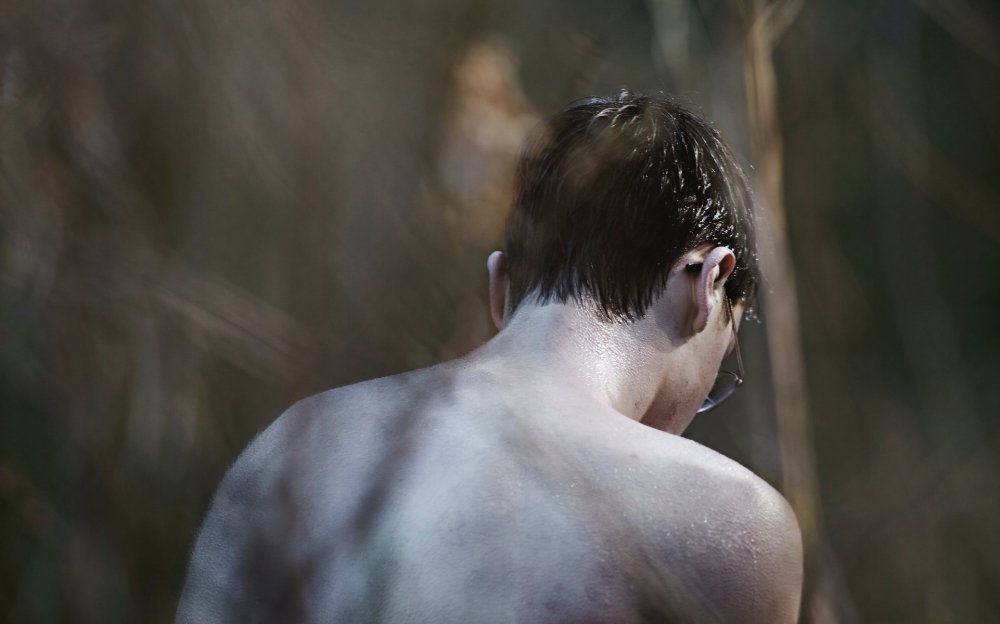
Jamie Marks is Dead (2014)
Carter Smith’s Jamie Marks Is Dead, adapted from Christopher Barzak’s novel One for Sorrow, is no less in search of solid form than its adolescent protagonist Adam (Cameron Monaghan). After bullied classmate Jamie Marks is found dead by the river, his ghost returns, visible only to his former friend Gracie (Morgan Saylor), with whom he used to collect rocks, and to depressive Adam, who himself has one foot in the grave, the other in the closet. At first Adam imagines it’s his task to find out what happened to Jamie and take vengeance, as though he were in The Sixth Sense – but in fact the film’s concerns are far more internal and psychological, with Jamie’s death a shifting, formative influence on Gracie and Adam’s future life. Smith conjures this bizarre love triangle without recourse to any special effects, and maintains a wintry melancholy throughout.
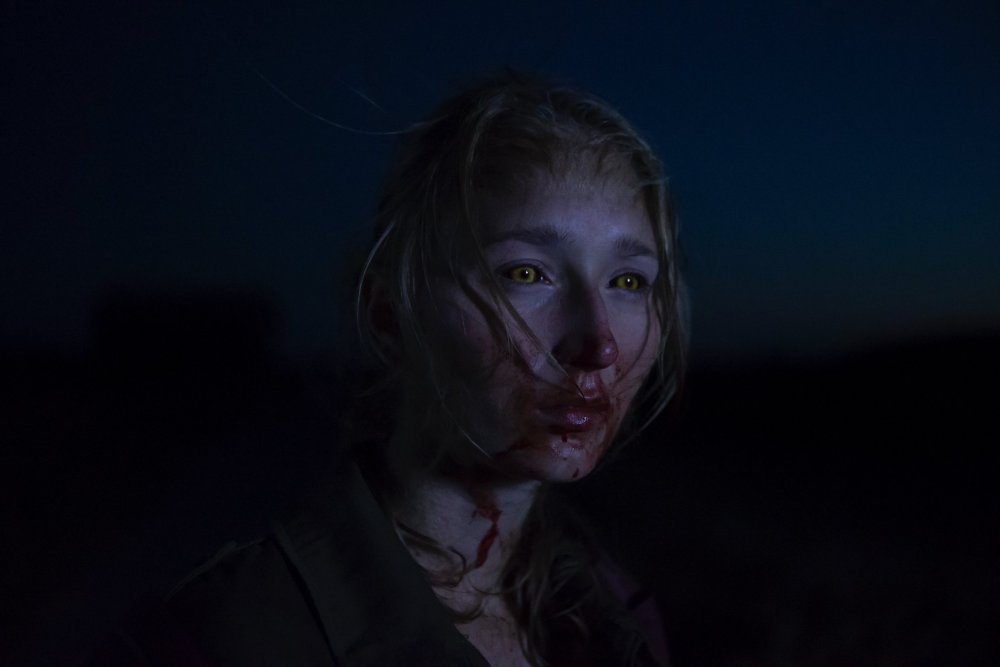
When Animals Dream (Når dyrene drømmer, 2014)
In When Animals Dream (Når dyrene drømmer), 16-year-old Marie (Sonia Suhl) is old enough to have started work at her coastal town’s fish-processing factory, but her body is also beginning to change, raising alarms with her father (Lars Mikkelsen) and the family doctor (Stig Hoffmeyer) that she may be showing the first symptoms of a condition that has left her mother a drug-dependent near-vegetable in a wheelchair.
Riffing on Carrie (1976) and Ginger Snaps (2000), and set almost entirely in wintry fog and mist, Jonas Alexander Arnby’s film depicts a young woman embracing the monstrous feminine even as she is confronted by smalltown fear and prejudice. It’s a moody piece – and might have seemed more memorable if it hadn’t appeared on the same slate as Justin Benson and Aaron Moorhead’s Spring, which is thematically and structurally similar but far richer in its breadth.
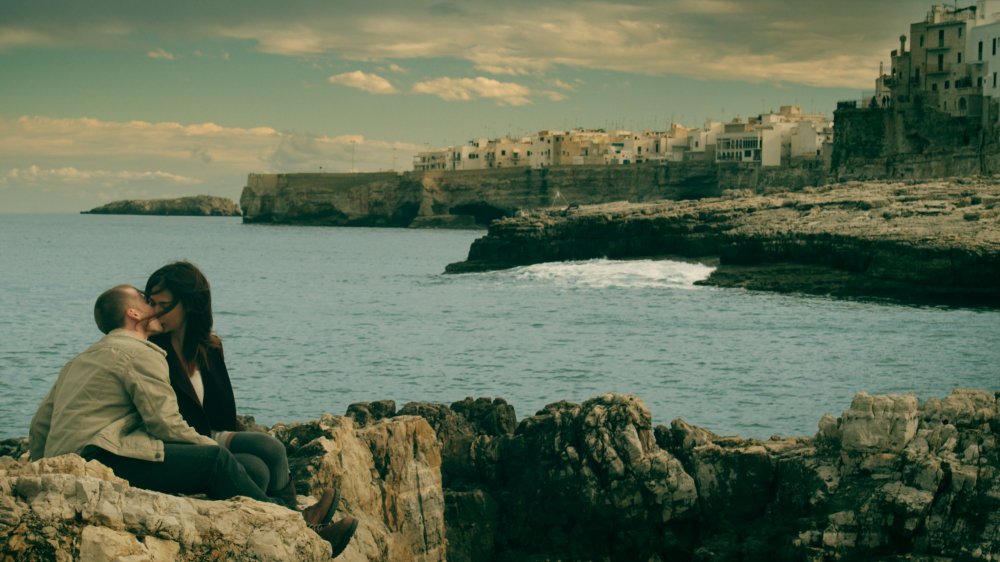
Spring (2014)
“What do you like more, pool or ocean?” Although this question seems natural enough when posed alongside the porous Italian coastline where local young polyglot geneticist Louise (Nadia Hilker) has brought American tourist Evan (Lou Taylor Pucci), her words also play upon the place of the finite within the infinite. “The ocean goes on and on and on, it’s mysterious,” Louise continues, standing before a natural basin in the rocks; yet “this pool has enough mystery – like you.”
The last in his line, Evan has fled to Europe after the death of his mother, with trouble at his back and mortality very much on his mind – but then he hooks up with the very forward Louise and begins to contemplate a different future. Louise, however, is not like other women – and as her body and behaviour violently transform, Evan must decide how far he’ll go for a love that may never be requited and may even be the death of him.
Showing the same invention as Benson and Moorhead’s astonishing 2012 debut Resolution, Spring splices the DNA of Before Sunrise (1995) and Possession (1981) to engender a monster movie at the shoreline of biology and romance. Much as its tourist-town setting looks out over the boundless sea beyond, Spring exposes its week-long affair to eternity via millennia of global history and a timeless legacy of evolution and mutation. Moving and beautiful, it’s a true original, with an appeal that extends way beyond the normal limits of the horror genre.
-
The Digital Edition and Archive quick link
Log in here to your digital edition and archive subscription, take a look at the packages on offer and buy a subscription.




